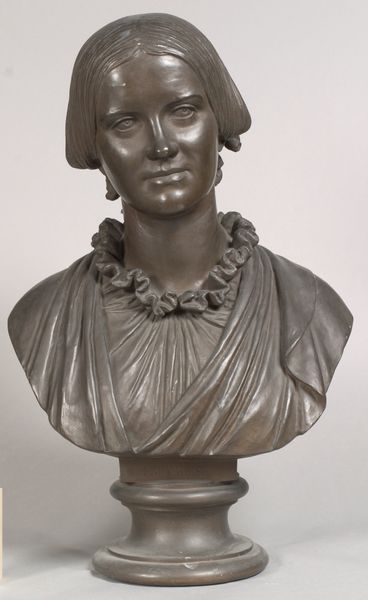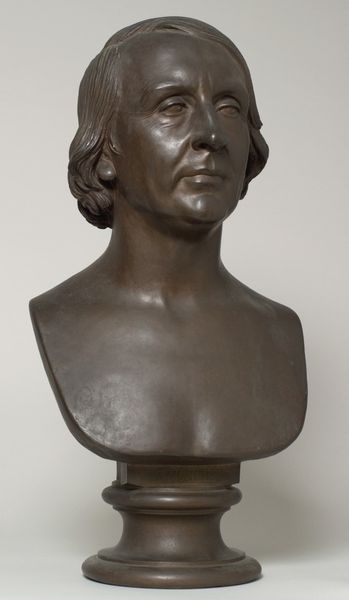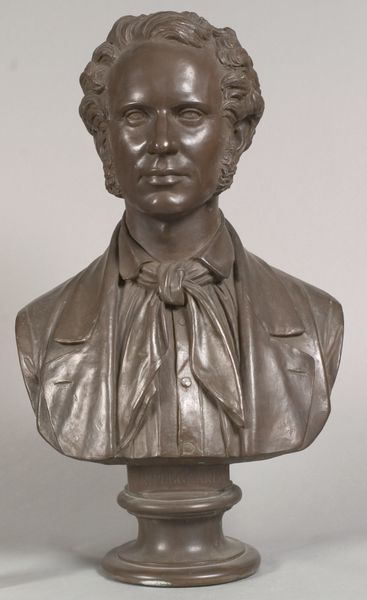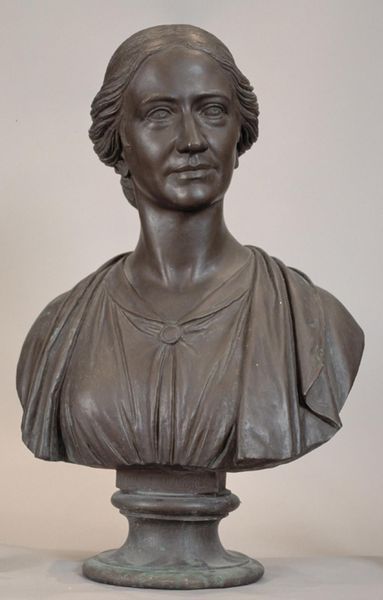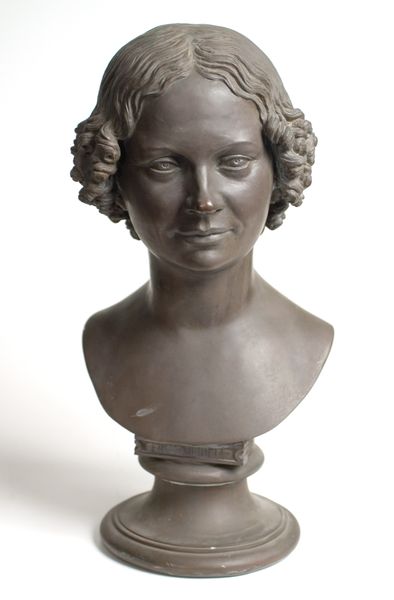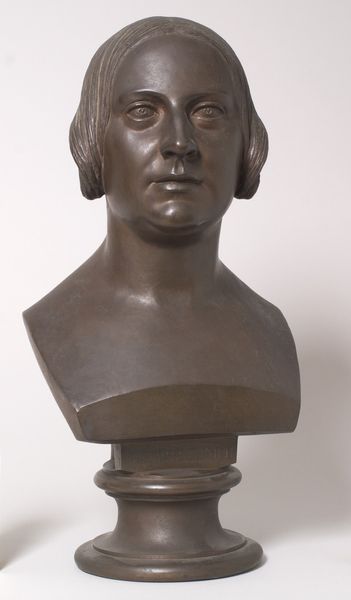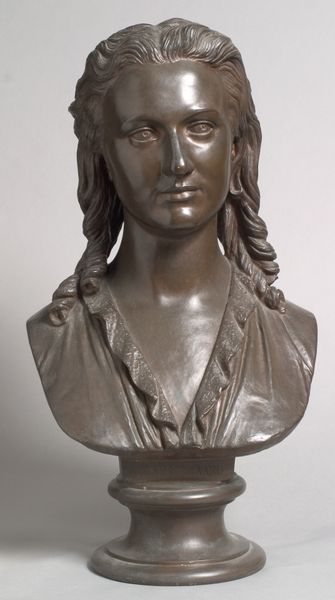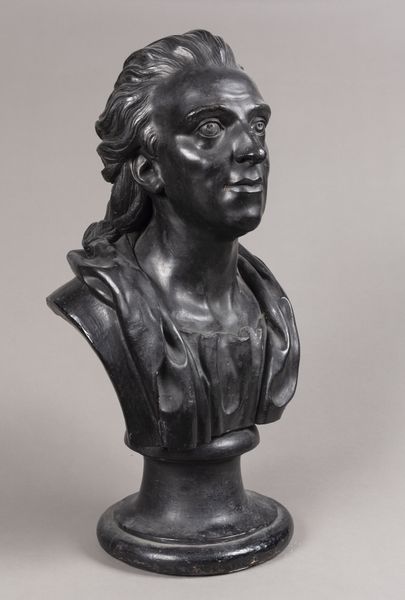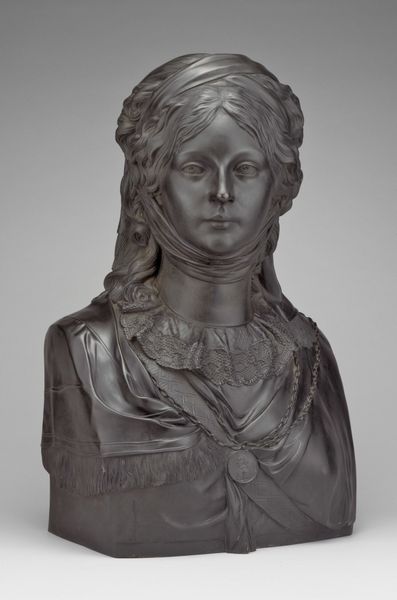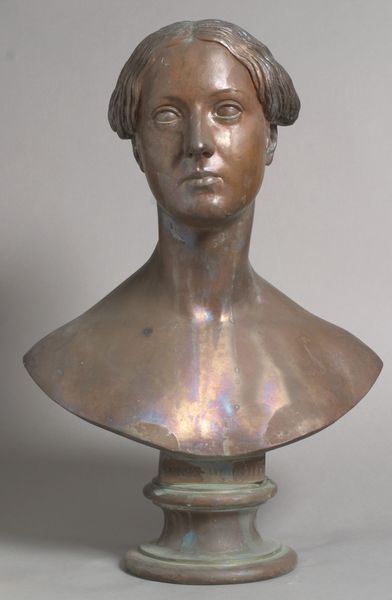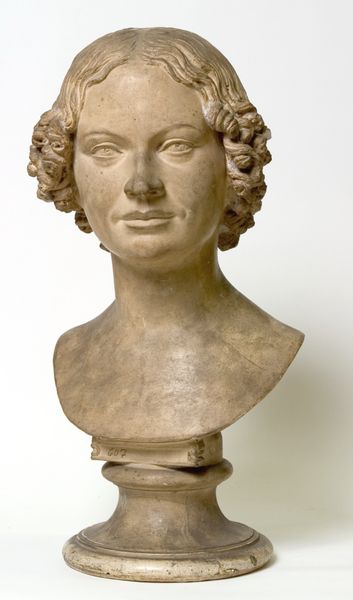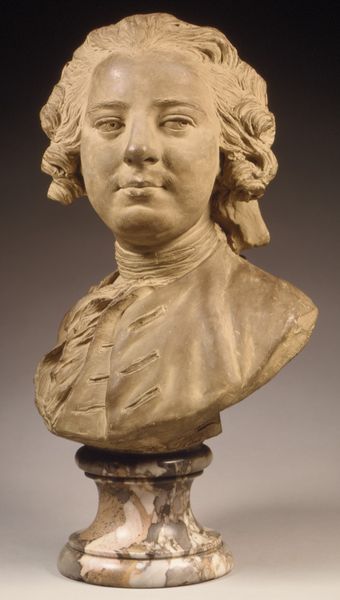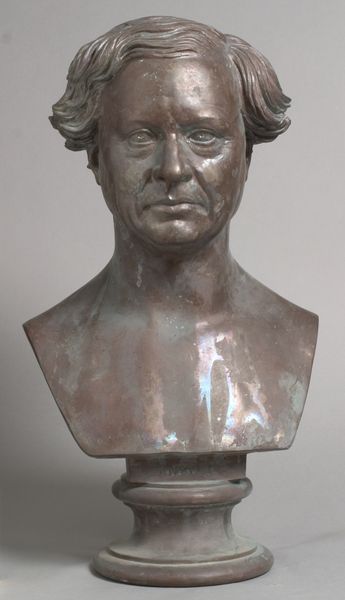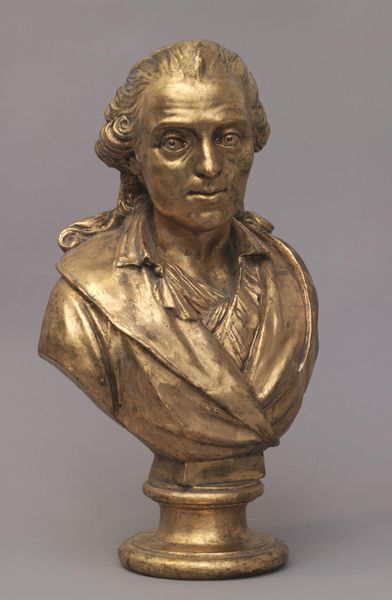
bronze, sculpture
#
portrait
#
sculpture
#
bronze
#
sculpture
#
academic-art
#
realism
Dimensions: 60 cm (height) (Netto)
Curator: This is H.W. Bissen's bronze bust, "Frk. Benedicte Ulfsparre Treschow," created in 1862 and currently residing in the SMK, the Statens Museum for Kunst. Editor: What strikes me first is how solid and grounded she seems, that bronze has this permanence, this weight to it. Her gaze is really intense; you know? Not flirtatious, just direct. Curator: Right, Bissen was deeply entrenched in the academic art traditions of the time. A pivotal element was the realistic depiction of the subject. Considering the historical context of portraiture, specifically in relation to class and gender, what statements are made through this almost hyper-realistic rendering of Treschow? Editor: I'm picking up on what you're putting down. It does feel a bit...clinical? But also maybe trying to grab onto the essence of a person, you know? This idea of "capturing" a personality for posterity. Makes me wonder if Treschow herself felt this represented *her.* The slight upturn to the lips feels really subtle, like a personal secret almost. Curator: Precisely. Portraits, especially busts like these, often served to solidify the subject’s position within a particular social hierarchy. And her belonging to the Treschow family—well, there's certainly a status element at play. We need to unpack the socio-political implications inherent in immortalizing Frk. Treschow in bronze. What narratives are being constructed, and, just as crucially, who controls those narratives? Editor: See, I like how you’re thinking about control of a narrative here. I wonder though, was Bissen, by rendering her with this much humanity, offering Treschow an opportunity to shape the future’s narrative? The slight asymmetry, the almost imperceptible shift in the eyes... are these accidents of artistry or moments where Benedicte slips free of formal artifice? I'd wager, the best works find a harmony there. Curator: Indeed. Through a critical examination of this sculpture and situating it within the discourse of identity, social class, and artistic representation we can illuminate the complex relationship between artist, subject, and historical context. Editor: So, in a way, this piece isn't just about what Bissen saw, but about what he lets us *think* we see, and the secrets Frk. Treschow manages to keep anyway.
Comments
No comments
Be the first to comment and join the conversation on the ultimate creative platform.
